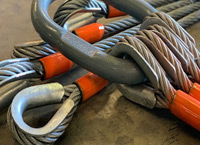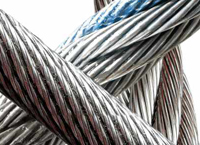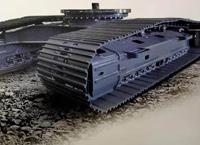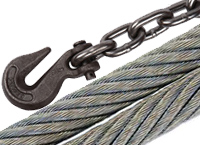- Construction Machinery
- Mining Machinery
- Compressors
Rotors
Search Results For Rotors| hydraulicmarket |
| Iran |
| 021-55130771 |
komatsu forklift hydraulic pump repair
Repairing the hydraulic pump of a Komatsu forklift involves accurately diagnosing faults, disassembling the pump, and inspecting internal components. Common issues include oil leakage, pressure loss, and unusual noise. Before repair, the hydraulic system should be drained and filters replaced to prevent contamination. Using precise tools and measuring pressure and flow during post-repair testing ensures system safety and optimal performance.
Komatsu forklift hydraulic pumps are typically gear-type or variable displacement piston pumps with high capacity. Pump pressure ranges from 100 to 200 bar depending on the forklift model, and flow rate is between 40 to 80 liters per minute. These technical specifications allow the pump to generate sufficient force to lift heavy loads and operate hydraulic cylinders. Proper pump selection and accurate adjustment of pressure and flow are critical for system efficiency and longevity.
During Komatsu hydraulic pump repair, attention must be paid to worn gears, pistons, and O-rings. Using standard hydraulic oil and replacing rotors and bushings when worn restores pressure and flow to factory specifications. Inspecting internal leaks and performing functional tests after assembly ensures the forklift’s hydraulic system operates efficiently
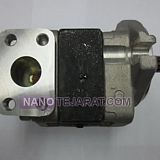
 | |
| hydraulicmarket | 021-55130771 |
| Baygan-Sanat |
| Iran |
| 09196218230 |
Siemens explosion-proof electric motor
ChatGPT said:
The Siemens explosion-proof electric motor is a three-phase induction type with a squirrel cage rotor, available in power ratings from 0.55 to 315 kilowatts. These motors feature an IP66 protection class and thermal class F, making them suitable for environments with flammable gases and explosive dust. They operate within a voltage range of 220 to 690 volts and frequencies of 50 or 60 Hz. The motor housing is made of durable cast iron and fully complies with international standards IEC 60079-0 and IEC 60079-1. Efficiency levels meet IE3 or IE4 standards, and the motors hold ATEX and IECEx certifications.
Siemens explosion-proof motors are offered in temperature classes T4 and T5, capable of continuous operation in ambient temperatures up to 60 degrees Celsius. They utilize IC411 cooling systems and grease-lubricated bearings with high serviceability, enhancing operational lifespan. Dynamically balanced rotors and low vibration reduce noise and improve equipment durability. The terminal box can rotate 90 degrees, facilitating easy installation. These motors can be mounted in IM B3, IM B5, and IM B35 configurations. All components are manufactured with high precision and strict quality control to ensure safe and reliable performance in hazardous environments.
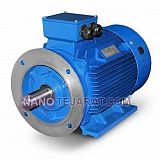
 | |
| Baygan-Sanat | 09196218230 |
| Baygan-Sanat |
| Iran |
| 09196218230 |
Marelli Marine Electric Motor Italy
The Marelli marine electric motor, manufactured in Italy, is one of the most advanced electric motors in the maritime industry, designed and produced using cutting-edge European technology. These motors typically come in power ranges from 0.5 to 50 kilowatts and operate at voltages between 380 to 480 volts in three-phase configurations, fully reinforced for use in harsh marine and saline environments. International standards such as IEC 60034 and IP65/IP66 are strictly adhered to, ensuring complete protection against water ingress and dust. High energy efficiency, a power factor above 0.95, and continuous duty rating S1 are key features of these marine electric motors, resulting in reduced energy consumption and extended motor lifespan.
Mechanically, Marelli motors are equipped with squirrel-cage rotors designed to minimize vibration and noise, capable of withstanding high mechanical and thermal shocks. The cooling system is available in air-cooled IC411 or water-cooled ICW versions, customizable per customer requirements to maintain optimal performance even in high-temperature marine environments. Additionally, the motors can be installed in various orientations and utilize high-quality bearings to increase shaft durability and reduce wear. These characteristics make Marelli
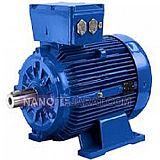
 | |
| Baygan-Sanat | 09196218230 |
| shoping-14 |
| Iran |
| 02155433645 |
Supercharger maintenance
Supercharger maintenance involves inspecting and replacing rotors or blades, bearings, seals, and housing to maintain airflow efficiency above 90% and output pressure between 0.5 and 2 bar. Rotor speeds typically range from 20,000 to 60,000 RPM, with airflow capacity from 50 to 500 liters per second. Dynamic rotor balancing must be within 0.02 millimeters, and oil seals, such as NBR or Viton, are replaced to prevent air and oil leakage.
Post-repair performance tests include measuring output pressure, airflow, and operating temperature. Operating temperature should range from 0 to 120°C, with noise levels below 80 dB. Non-destructive testing NDT, including ultrasonic and visual inspection, is performed on bearings and housing. Repairs following ISO 9001 and SAE J1726 standards can extend supercharger service life beyond 15,000 hours.
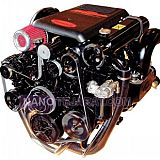
 | |
| shoping-14 | 02155433645 |
| shoping-14 |
| Iran |
| 02155433645 |
Hydraulic pump maintenance
Hydraulic pump maintenance involves inspecting and replacing internal components such as rotors, vanes, rollers, valves, and bearings to maintain system efficiency above 90% and working pressure up to 250 bar. Pump displacement ranges from 10 to 500 cc per revolution, with oil flow from 20 to 300 liters per minute. Shaft and bearing alignment must be controlled within 0.05 millimeters, and seals, including NBR or FKM, are replaced to prevent oil leakage.
Post-repair performance tests include checking pressure and flow under static and dynamic conditions. Operating temperature should remain between 0 and 90°C, and noise below 75 dB. Non-destructive testing NDT, including radiography and ultrasonic inspection, is performed on the shaft and housing. Repairs following ISO 4406 and DIN 51524 standards can extend pump service life beyond 10,000 hours.
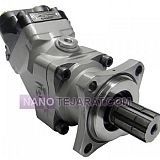
 | |
| shoping-14 | 02155433645 |
| shoping-14 |
| Iran |
| 02155433645 |
Types of superchargers for construction machinery: loaders, bulldozers, graders, and excavators
Superchargers for construction machinery include mechanical types Roots and Twin-Screw and turbochargers positive pressure to increase engine intake air volume. Operating pressure ranges from 0.5 to 2.5 bar, with outlet air temperatures up to 150°C. Airflow capacity varies between 500 to 5000 liters per minute depending on engine and machine type. Shafts and rotors are made of alloy steel with 55–60 HRC hardness, with maximum RPM up to 20,000 for turbos and 6,000 for mechanical superchargers.
Superchargers are equipped with double-sided bearings, high-pressure lubrication, and oil/air cooling systems to maintain engine temperature. Installation and tuning follow ISO 9001 and SAE J726 standards to ensure accurate air pressure and volume across all engine speeds. Components feature aluminum or hard chrome coating for wear and corrosion resistance, with a service life of up to 10,000 hours under industrial conditions.
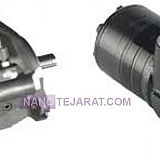
 | |
| shoping-14 | 02155433645 |

